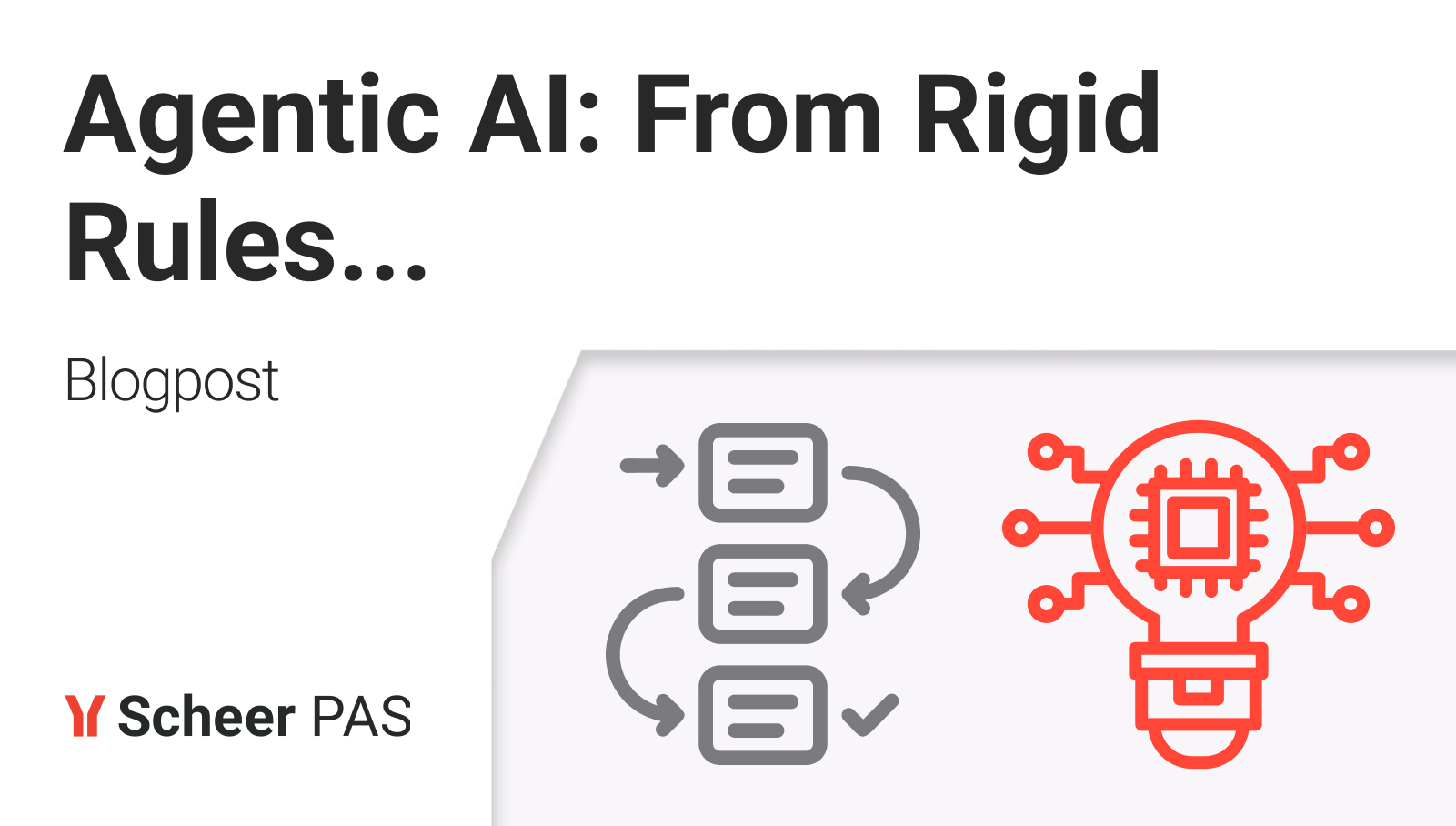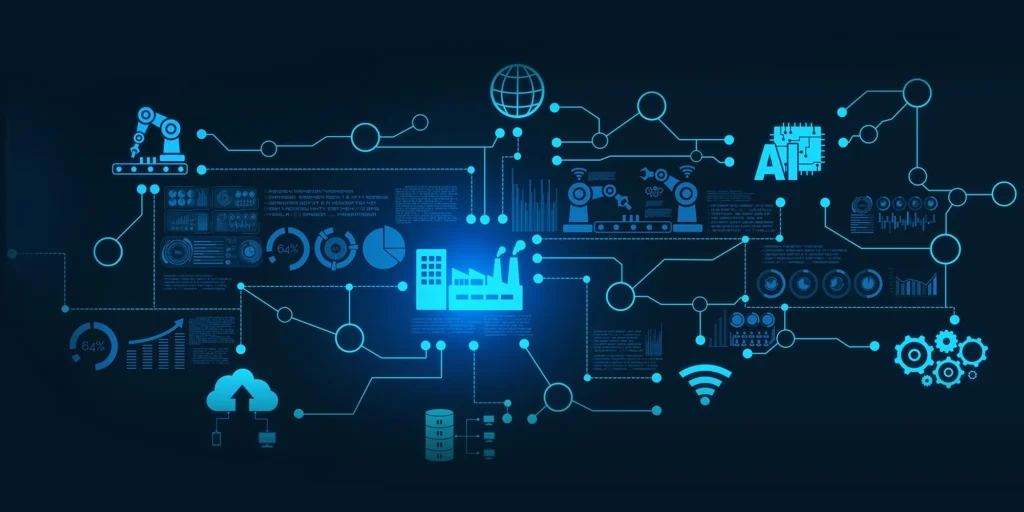Agentic AI: From Rigid Rules to Adaptive Process Automation

In 1975, Kodak – already a strong brand at the time – invented the first true digital camera. Today, we hardly hear about Kodak. In 2012, the company filed for bankruptcy. The reason is well-known: digital photography went mainstream while Kodak stuck to its core business of film and development. The irony is striking: Kodak held the future in its hands and didn’t recognize it. Rigid business rules and fixed decision-making paths shaped the organization. And these same rules still dominate many companies today – even though trends now change faster than ever. Kodak’s true potential lay deep within its R&D processes. The processes themselves weren’t wrong – they just weren’t adapted to market shifts in time.
The Status Quo of Automation

Especially in the tech world, we can see that many corporations are beginning to replace initial tasks with AI. Looking at today’s market challenges, process automation still largely relies on predefined business rules and fixed workflows to minimize manual work. That model worked in the last century – and up until the late 2000s. But today, faster adaptation is key – driven by two main factors: trends and exceptions.
Anyone who wants to stay resilient must be adaptable. Rigid workflows can no longer cope with the growing number of exceptions, leading to more manual work again. At the same time, trends are becoming more volatile and harder to predict. Large organizations often react with great effort – or simply ignore them. Whether you turn a blind eye to change, like Kodak did, or overinvest in it – the wave will come. Its name is AI. But introducing an LLM alone won’t cut it. What’s needed is a clear concept to create real value – not just the appearance of being “cutting-edge.”
Agentic AI and Process Automation

Just as IT has evolved from machine commands to natural language, process automation must also move forward. The limits of predefined workflows and rules become apparent when dealing with unstructured data and sources. Traditional approaches increasingly require manual input – processes stall, efficiency drops. This is where Agentic AI comes into play. AI agents – powered by secure, locally managed LLMs trained on curated, company-specific data – close the gap between the ambition and the reality of automation.
Where fixed process chains once needed manual checks to handle exceptions, AI agents enable flexible workflows. Examples of what AI agents can balance or enhance within processes include:
- Accessing approved databases and structured data sources
- Comparing information with predefined legal or compliance rules
- Reading and interpreting incoming messages relevant to the process
- Identifying key data and transforming it on demand – without interruption
- Proactively closing data gaps, including automatic requests and feedback handling
- Escalating process steps for human review once risk criteria are met (detected automatically or semi-automatically)
- Ensuring full transparency and analysis at every step – for greater agility and resilience
Looking at today’s Agentic AI features in automation platforms, they primarily replace manual tasks. But that alone doesn’t prevent untapped potential. Even at Kodak, AI agents could have automated many process steps – but without looking at their own data and its meaning, it still wouldn’t have been enough. And that brings us to an aspect we’ve left out so far.
Looking Ahead

The features mentioned mainly reduce manual work and costs. But the real value lies elsewhere: in recognizing improvements and uncovering new opportunities. It’s not just about identifying process errors – Process Mining already does that – but about proactively discovering potential.
When Agentic AI gains insights into business logic, processes, and workflows, it can deliver tremendous value based purely on internal data. What’s often missing is a consistent view of future possibilities. Business analysts can achieve similar results, but often more slowly – and at higher cost.
That’s why it’s worth going one step further: letting AI agents not only replace manual steps but also take over real-time analysis and insight generation. Combined with existing Process Mining, your own data becomes a goldmine – it’s there, just often unstructured.
The Security Question

Anyone integrating AI agents into processes must consider security from the start. Data processing is subject to strict regulatory requirements. Using public LLMs with customer or sensitive internal data increases the risk of leaks and attack surfaces. Responsible implementations account for that from day one.
At the same time, AI agents can be limited to specific data types and volumes – with or without external research. That improves both security and training quality. Clear instructions on how data should be processed and stored increase precision and filter out noise. This way, humans stay in control of decisions rather than being distracted by irrelevant signals.
Conclusion (Part 1)
Back to the beginning: in 1975, Kodak already had all the ingredients for future success. But focusing on existing practices turned a trump card into a missed opportunity. A high degree of automation kept the brand alive for a while – yet the lack of awareness of its own potential contributed to the fall.
Today, anyone automating processes should think beyond cost reduction. Inside every organization lies a data goldmine waiting to be unlocked. Agentic AI helps you tap into that goldmine – boosting both agility and resilience. Stay tuned: In Part 2, we’ll showcase real-world use cases, the Scheer PAS approach to Agentic AI, additional success and failure stories from enterprise settings, and potential risks of over-relying on AI agents. Interested? Subscribe to our newsletter or reach out to discuss your experiences and challenges – together, we’ll find the right solution.



